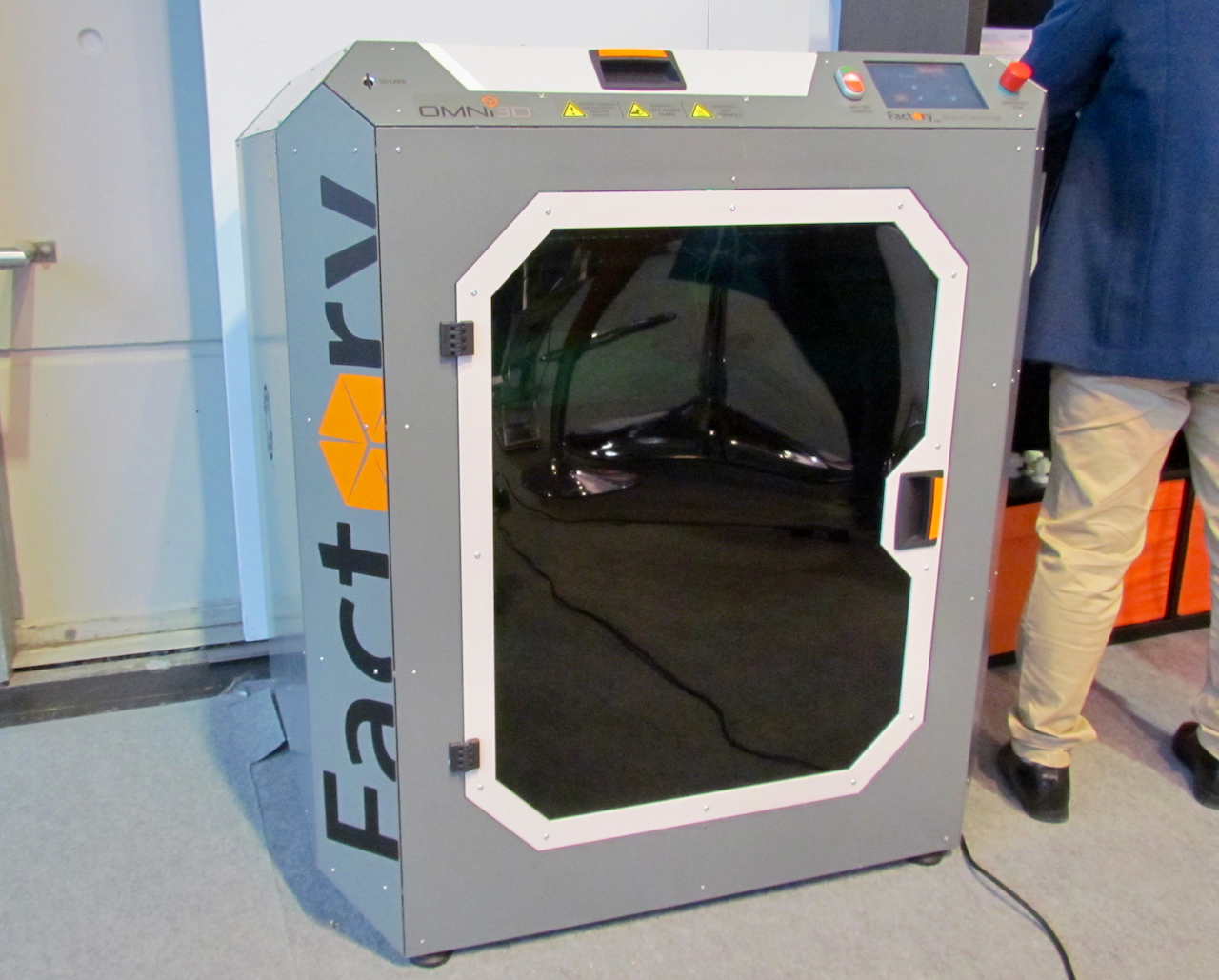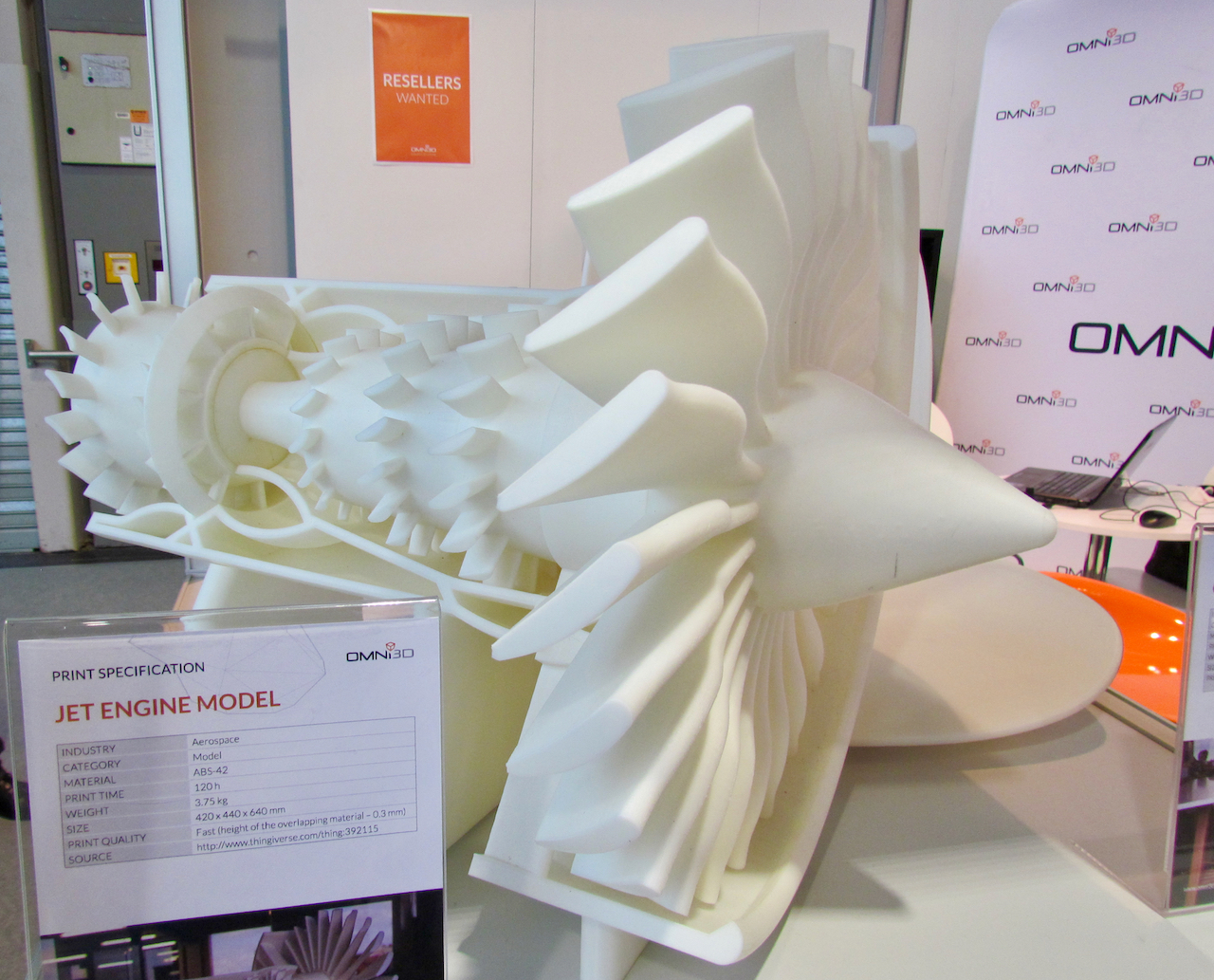
Omni3D’s Factory 2.0 Production System is directly targeting Fortus users.
The Factory 2.0 machine from Omni3D is a filament-based 3D printer that is remarkably similar to Stratasys’ line of Fortus production 3D printing equipment. Both units offer ability to 3D print objects in strong ABS plastic on a reliable basis.
The Factory 2.0 is interesting in that they heat both the chamber AND the platform. Fortus machines heat only the chamber itself, while the print surface is a removable plastic sheet. Many other 3D printers of this calibre heat the platform but not the chamber. Omni3D does both!
The Factory 2.0 includes a robust motion system, which they claim to provide 0.03mm accuracy.
The machine also does not use removable sheets as the Fortus does; instead they use a reusable glass surface for perfectly flat printing.
Two print heads are used, one with the model material, typically ABS, and the other is for support material. Omni3D uses HIPS as their dissolvable support material, which can be removed with a good dunk in Limonene.

Omni3D offers proprietary filament as does Stratasys, but it’s really on the “honor system”, and the company encourages customers to test new materials. Of course, they only certify printing with their own materials.
Another major difference from the Fortus equipment is the power subsystem. While the Fortus requires three-phase power input, the Factory 2.0 requires only two lines; one is a standard 300W for operating the electronics and the other is a 1200W feed for the rest of the machine’s functions.
But the key differentiation from the Fortus line, according to Omni3D is pricing. The machines base price is around €34,600 (USD$37K), which is lower than Fortus pricing. In addition, the cost of materials is substantially lower, with Omni3D suggesting their cost is only about USD$50 per kg.
The result of all this is that the company is directly targeting it at Fortus users. In fact, they say most of their clients are in fact existing Fortus users who want to try something different that might be more efficient for their application.
For many of these specifications, one might surmise the Omni3D Factory 2.0 is a better choice than Stratasys’ Fortus line, but that might not always be the case. You may require particular materials only available from Stratays, for example. Or you may depend on Stratasys’ more extensive network of service providers.
As always, equipment choices should be made based on all the factors and requirements – even those beyond mere machine specifications.
Via Omni3D

